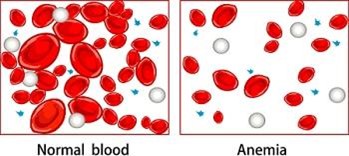A nurse is developing a care plan for a client who is in Buck’s traction and is scheduled for surgery for a fractured femur of the right leg.
Which of the following interventions should the nurse delegate to an assistive personnel?
Observe the position of the suspended weight
Check the client’s pedal pulse on the right leg
Ask the client to describe her pain
Remind the client to use the incentive spirometer
None
None
The Correct Answer is D
The correct answer is D. Remind the client to use the incentive spirometer.
Choice A rationale:
Observing the position of the suspended weight is beyond the scope of practice for assistive personnel (AP). This task requires assessment skills to ensure proper alignment and functioning of the traction system, which is the responsibility of the nurse.
Choice B rationale:
Checking the client’s pedal pulse on the right leg involves assessment and clinical judgment to evaluate perfusion and detect potential complications such as impaired circulation. This is not a task that can be delegated to AP.
Choice C rationale:
Asking the client to describe her pain requires assessment and interpretation of subjective data, which falls under the nurse's scope of practice. Pain assessment is a critical nursing function.
Choice D rationale:
Reminding the client to use the incentive spirometer is a non-assessment task that involves reinforcing previously taught instructions. This is appropriate to delegate to assistive personnel, as it does not require clinical judgment.
Nursing Test Bank
Naxlex Comprehensive Predictor Exams
Related Questions
Correct Answer is B
Explanation
The correct answer is choice B. Applying an orthotic to the client’s foot.
An orthotic is a device that supports or corrects the function of a body part.
In this case, an orthotic can help prevent foot drop, which is a common contracture deformity in immobile patients.
Foot drop occurs when the muscles that lift the foot become weak or paralyzed, causing the foot to hang down at the ankle. An orthotic can keep the foot in a neutral position and prevent shortening of the calf muscles and Achilles tendon.
Choice A is wrong because a trochanter wedge is used to prevent external rotation of the hip, not contracture. A trochanter wedge is a triangular-shaped pillow that is placed between the legs to keep them parallel and aligned.
Choice C is wrong because a towel roll under the neck is used to maintain proper cervical alignment, not contracture. A towel roll can prevent hyperextension of the neck and support the natural curve of the spine.
Choice D is wrong because a pillow under the knees can actually cause contracture of the knee joint by keeping it in a flexed position. A pillow under the knees can also reduce blood flow to the lower extremities and increase the risk of deep vein thrombosis.
Contracture is a permanent tightening of the muscles, tendons, skin, and surrounding tissues that causes the joints to shorten and stiffen.
Contracture can limit the range of motion and function of the affected body part. Contracture can be caused by inactivity, scarring, or diseases that affect the muscles or nerves. Prevention of contractures requires early diagnosis and initiation of physical medicine approaches such as passive range of motion exercises and splinting before contractures are present or while contractures are mild.
Correct Answer is D
Explanation
Choice A reason
Setting the IV infusion pump to administer the blood over 6 hours is not the recommended rate for administering packed RBCs. Blood transfusions are typically given more rapidly, usually within 2 to 4 hours. The specific rate may vary depending on the client's condition and the provider's order.
Choice B reason
Administering the blood via a 21-gauge IV needle is not typically related to the administration of the packed RBCs. The appropriate gauge of the IV needle for blood transfusions depends on the client's condition and the type of transfusion. Larger-gauge needles are often used for blood transfusions to allow for a faster flow rate and prevent haemolysis of the blood cells.
Choice C reason
Checking the client's vital signs from the previous shift prior to the initiation of the transfusion is not sufficient for ensuring the client's safety during the blood transfusion. The nurse should assess the client's current vital signs, including temperature, heart rate, blood pressure, and respiratory rate, before initiating the transfusion. Monitoring vital signs is essential during the transfusion to detect any adverse reactions or changes in the client's condition.
Choice D reason
Rush the blood administration tubing with 0.9% sodium chloride prior to the transfusion is the correct answer. When preparing to administer a blood transfusion to an adult client with chronic anaemia, the nurse should rush the blood administration tubing with 0.9% sodium chloride (normal saline) prior to the transfusion. This process is called priming the tubing.
Priming the tubing helps remove any residual air from the tubing and ensures that the blood transfusion is administered smoothly without introducing air into the client's bloodstream. Air embolisms can be a serious complication, and priming the tubing with normal saline helps prevent this risk.

Whether you are a student looking to ace your exams or a practicing nurse seeking to enhance your expertise , our nursing education contents will empower you with the confidence and competence to make a difference in the lives of patients and become a respected leader in the healthcare field.
Visit Naxlex, invest in your future and unlock endless possibilities with our unparalleled nursing education contents today
Report Wrong Answer on the Current Question
Do you disagree with the answer? If yes, what is your expected answer? Explain.
Kindly be descriptive with the issue you are facing.
